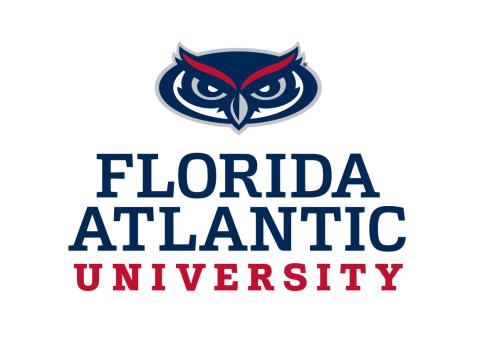
In trust, we trust: ensure transparency in university endowments
Endowment funds act as robust financial bastions for academic institutions, with $691 billion (£569 billion) invested in US colleges and universities in the beginning of the financial year in 2021 alone. They function like savings accounts that gain interest. When used, the core donation remains untouched, and only the interest accumulated is spent. Primarily originating from alumni or other sources, these contributions flow into the academic world with a vision. Donors believe their gifts will bolster vital academic pursuits, supporting scholarships, groundbreaking research, faculty positions and infrastructure enhancements.
Particularly during financially tumultuous times, endowments behave like financial safeguards that preserve the consistency of institutional programmes and offerings. However, the mere existence of these fiscal safety nets is not the end goal. Institutions must channel endowed funds appropriately, staying true to the aspirations of their benefactors while ensuring unwavering commitment to future scholars and visionaries.
Given the magnitude of their impact, endowments naturally attract scrutiny. The recent financial disclosures of budget deficits from institutions such as DePaul and West Virginia University have only intensified the spotlight on them. This, coupled with looming legislative overhauls, has amplified the call for transparency in financial dealings. Grappling with myriad fiscal challenges from alarming budget shortfalls to dwindling enrolments, universities stand at a pivotal juncture. Each institution’s ensuing steps will either deepen or erode trust. Thus, university leaders must closely monitor endowment governance and ensure transparency, diligence and utmost integrity. So how can universities rise to this challenge?
Ensuring transparency
Endowments often involve intricate fee structures that can include management fees for investment oversight, administrative fees for day-to-day operations and performance fees based on how well the investments do. Institutions must demystify each fee’s role, providing clear definitions and descriptions to promote understanding of the nuances of the fees associated with their contribution.
For example, universities should unbundle any annual endowment management distribution fee (an internal tax that the university foundation pays itself) to describe how those funds are used, including whether these fees also include payments to the investment adviser.
Any university that charges an initial gift fee should specify whether this is to be paid at the time the gift is given or after a certain period.
A university’s annual distribution fee (a fee charged for the management of an account or fund) should clearly articulate the basis for calculating the annual payout from an endowment or fund, ensuring transparency about the actual amount distributed to the intended recipient within the institution. For example, many universities base the distribution fee on the past 20 quarters of investment performance, net of endowment management distribution and investment adviser fees.
The distribution fee should also clarify whether this is paid at the time of the gift, or more typically after a year of accumulation inside an account. Universities should also clarify how these fee structures compare with peer institutions, accentuating a commitment to both transparency and competitive excellence.
- Want to know what the future of HE looks like? Ask your students
- Because you’re worth it: how universities can prove their value to prospective students
- A tale of two models: rethinking shared governance
Regular review
Endowments demand accountability. Universities can meet this by partnering with neutral financial advisers to create performance reviews, ensuring objective evaluations. These third-party financial assessments can be coupled with feedback on endowment communication and performance from academic and philanthropic organisations. The breadth and depth of the review will cement a university’s more democratic and transparent approach to stewarding gifts.
Direct channel for donors
Today’s tech-savvy donors anticipate real-time insights on the effects of their contribution. One way to offer this is via a dedicated digital portal. For instance, platforms such as Donorbox and Classy allow institutions to provide donors with up-to-date information on how their funds are being used, complete with dashboards, project updates and financial breakdowns. These platforms not only make the donation process seamless, but also ensure that donors remain informed about and engaged with the institution’s mission. Additionally, for the largest endowments, and certainly those with specifications in a gift agreement, the annual statement should be supplemented by quarterly updates. These efforts to showcase achievements, address hitches and map out future endeavours help to sustain donor engagement, ensuring that they remain pivotal players in the institution’s narrative.
Universities are responsible for promoting legacy, trust and future aspirations, and carefully managed endowment management can set them apart. Transparent practices, evolving fee structures, regular evaluations and an open line of communication with donors are no longer optional – they’re imperative. Every dollar in an endowment encapsulates hope, belief and ambition. By embracing a robust, transparent and adaptive approach to endowment management, academic institutions not only honour the trust placed in them by donors, but also secure a resilient and thriving future for generations to come. In this intricate dance of fiscal responsibility and academic excellence, transparency and trust lead the way.
Siri Terjesen is associate dean for research and external relations and professor of entrepreneurship in the College of Business at Florida Atlantic University. Ahmad Al Asady is an assistant professor of management, a Challey Institute faculty scholar and research fellow at the Center for Entrepreneurship and Family Business at North Dakota State University.
If you would like advice and insight from academics and university staff delivered direct to your inbox each week, sign up for the Campus newsletter.




